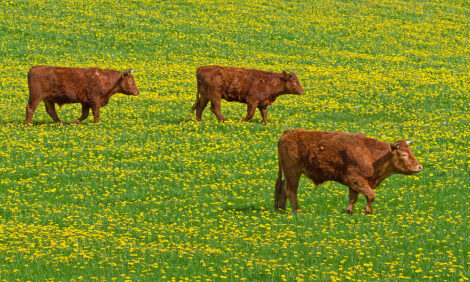



Securing Safety in the Heartland Disease Lab
US - With a project of the magnitude of the $451 million National Bio and Agro-defense Facility, or NBAF, there are bound to be questions about what impact it will have on the community and region, including, "How safe is it to study animal diseases in a location near people and animals?"The answer, claims K-State University researcher, Ron Trewyn, is that thanks to modern research methods and facilities, this research should be extremely safe - and urgently needed.
Ron Trewyn says the NBAF will provide a modern and secure laboratory environment for protecting America's farm animals and food supply. The facility will be built in accordance with the highest safety standards that have kept tens of millions of residents safe in places where labs studying diseases already exist.
"That's right: Federal labs in the middle of Frederick, Md., and Atlanta, Ga., have worked on the most dangerous human diseases for decades. Not a single community outbreak has occurred in these cities.
* "Protecting animals and people from disease -- making communities more secure and safe -- is the goal" |
|
K-State University researcher, Ron Trewyn
|
"In addition, a lab in Winnipeg, Canada, studies the highly contagious foot-and-mouth disease virus just across the border from North Dakota. Foot-and-mouth disease has not spread to livestock outside that facility."
The great news, he says is that modern biocontainment technology has eliminated the need for locating animal disease research on an island, as was done decades ago at the Plum Island Animal Disease Center, a few miles off the coast of New York.
"This brings us to the issue facing us today. We know our nation needs to significantly upgrade its capacity to prevent disease outbreaks in animals, yet the half-century old Plum Island Animal Disease Center is outdated and has limited capacity. It simply doesn't have the research or diagnostic capabilities needed to address animal diseases that could be introduced into the U.S., which is why an advanced facility on the mainland - the NBAF - is now on the slate."
Two years ago, the federal government asked communities with established animal research programs to step forward. Last summer, in recognition of our state's expertise, a site on Kansas State University's campus made the short list of potential places for the NBAF. Other sites are in Georgia, North Carolina, Mississippi and Texas, all of which have prompted questions about bringing animal disease research to areas near livestock.
Ron Trewyn says that the fact is that research at the NBAF will protect those very animals. That's the purpose of the NBAF - to develop vaccines and other countermeasures to animal diseases that threaten animal health, the nation's food supply, the U.S. economy and the health of the American public.
"At the moment, our country does not have sufficient facilities to conduct research on many of the most devastating foreign animal diseases, some of which pose health risks to people as well. Thus, required vaccines cannot be produced in a timely fashion, and solutions to potential human health threats cannot be developed."
A decision to build the NBAF in an isolated location - away from animals and people -- would significantly increase the cost of building, maintaining and operating the lab, and would continue to limit the availability of researchers willing to do this important work – and there's no need to do so.
"When you marry state-of-the-art biocontainment structures, solid physical security and technological know-how with proven safety protocols and personal protection, research on animal and human diseases can be conducted safely in facilities located near animals and people. Protecting animals and people from disease -- making communities more secure and safe -- is the goal, and it is a challenge our country is ready and able to undertake" says Ron Trewyn.
Further Reading
| - | Go to our previous news item on this story by clicking here. |
TheCattleSite News Desk


